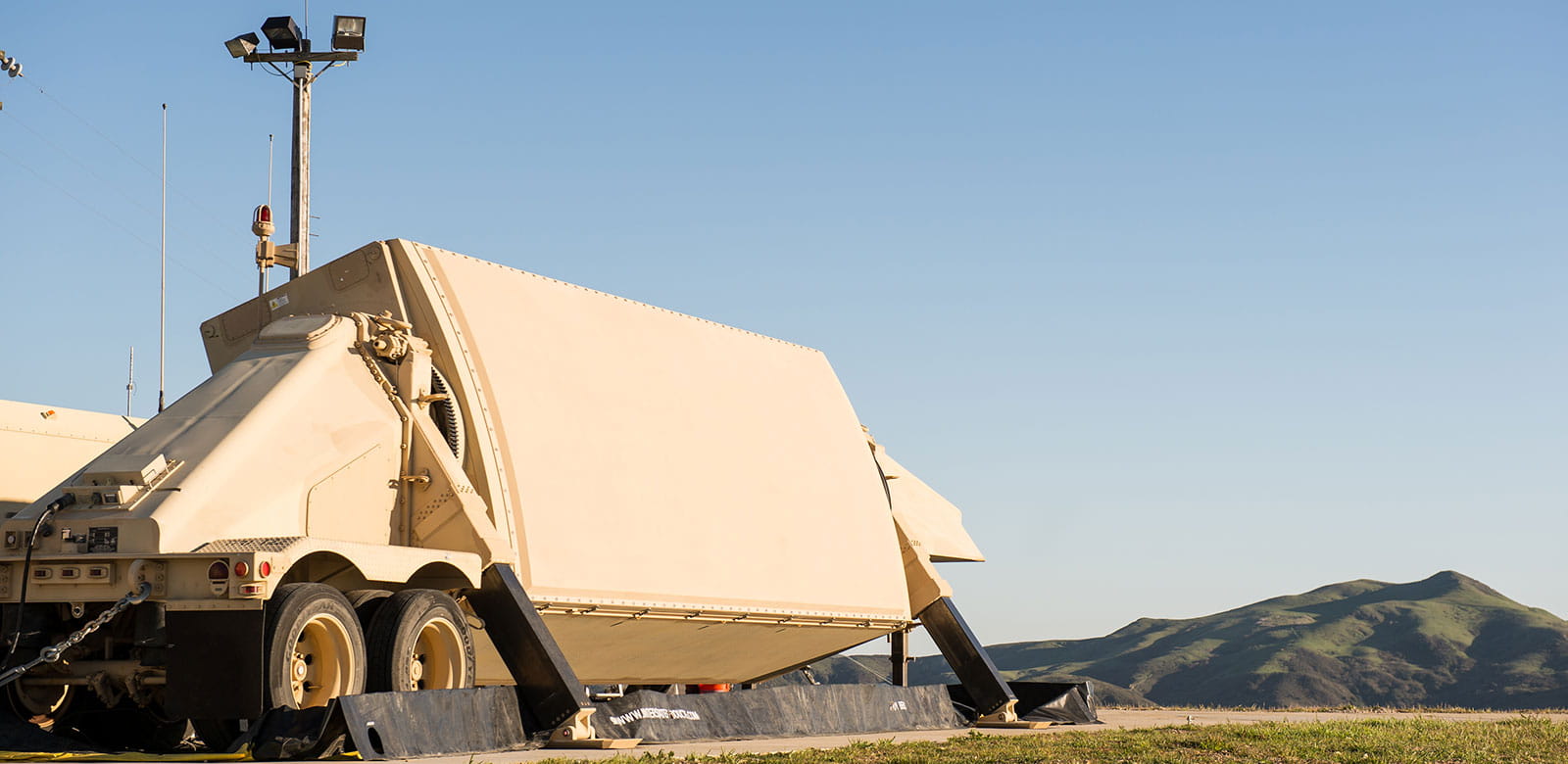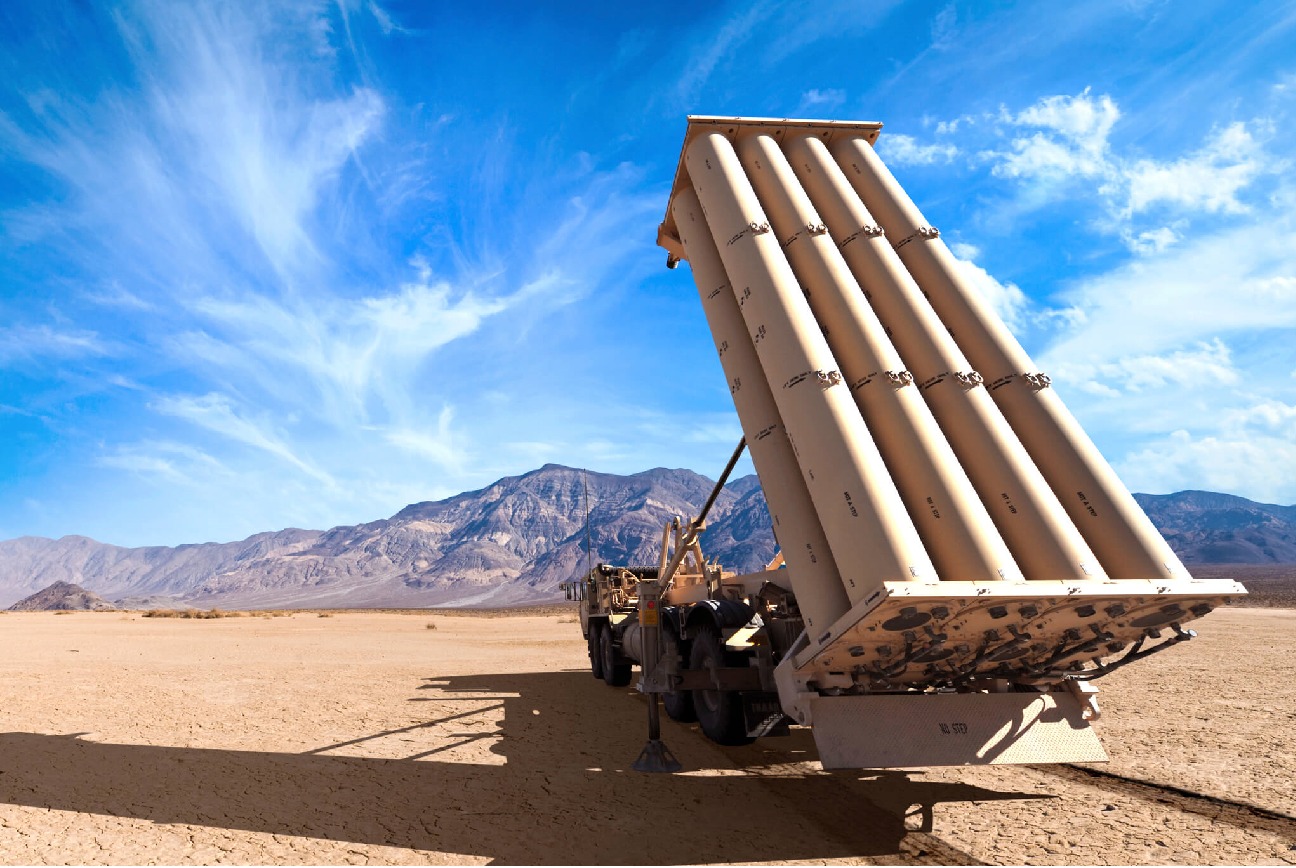THAAD: Israel Requests For 2nd THAAD AD System From The US Ahead Of Retaliatory Strikes On Iran?

Israel has reportedly requested the US to send a second THAAD battery to protect the country in case of an Iranian reaction after the much-expected Israeli counterstrikes, a few US and Israeli media outlets have reported.
According to Channel 12 reports, The United States may have confirmed plans to send a second Terminal High Altitude Area Defense (THAAD) battery to Israel as regional tensions escalate.
So far, there is no official confirmation.
Earlier on October 13, 2024, The Pentagon Press Secretary, Maj. Gen. Pat Ryder said in a statement, “At the direction of the President, Secretary Austin authorized the deployment of a Terminal High-Altitude Area Defence (THAAD) battery and associated crew of U.S. military personnel to Israel to help bolster Israel’s air defenses following Iran’s unprecedented attacks against Israel on April 13 and again on October 1.
The THAAD Battery will augment Israel’s integrated air defense system. This action underscores the United States’ ironclad commitment to the defense of Israel and to defend Americans in Israel from any further ballistic missile attacks by Iran. It is part of the broader adjustments the US military has made in recent months to support the defense of Israel and protect Americans from attacks by Iran and Iranian-aligned militias”.
This is not the first time the US has deployed a THAAD battery to the region. The President directed the military to deploy a THAAD battery to the Middle East last year following the October 7th attacks to defend American troops and interests in the region.
China, Russia Fret Over THAAD’s Radar
The deployment of US missile defense systems like the Terminal High Altitude Air Defense (THAAD) and the Aegis Ballistic Missile Defense (BMD) has elicited strong responses from US adversaries like China and Russia. More than the defense systems, the missile defense radar is the real nightmare for American adversaries.
The Army/Navy Transportable Radar Surveillance (AN/TPY-2) is a Raytheon product that bolsters the system’s defense against a range of threats and offers assistance for heightened protection. The TPY-2, a high-resolution X-band phased array radar, can be transported via truck, ship, and air.
The AN/TPY-2 was designed in tandem with the THAAD ballistic missile defense system. It can track targets at a considerable distance and trigger other American missile defense systems.
AfriPrime App link: FREE to download...
The AN/TPY-2 is a missile defense radar that can detect, track, and discriminate ballistic missiles to make it easier to shoot them down. This radar operates in two modes: forward-based mode for boost phase surveillance, terminal mode for terminal phase surveillance, and Terminal High Altitude Area Defense (THAAD) for fire support. Each mode is intended to fulfill a distinct set of needs. The Aegis platform is one of the systems that can provide space domain awareness.
The US Army uses the TPY-2 to provide the Command and Control, Battle Management, and Communications (C2BMC) system of the Ballistic Missile Defense System (BMDS), using regional and strategic ballistic missile threat data in conjunction with its allies.
The main advantage of using the X-band frequency is that it can distinguish between threats like a warhead from other small objects like space trash. The TPY-2 radar can provide the BMDS with precise tracking data due to a discrimination feature known as “range resolution.”
The AN/TPY-2 can operate in two modes: forward-based Mode (FBM) and Terminal Mode (TM).

With layered sensors and forward-based TPY-2 radars, the Ballistic Missile Defense System can engage the target more frequently and track and discriminate early, increasing the likelihood of a successful intercept. It can function alone or in tandem with other sensors, sending target data to the command and control system so that other sensors can use it.
In the forward mode, by placing itself in close proximity to possible launch sites, the AN/TPY-2 gives other assets access to missile tracking and discrimination data via the MDA’s C2BMC interface. The system’s short wavelength and antenna design enable it to image targets at high resolutions to differentiate targets from decoys and debris.
For instance, cueing data for Aegis and THAAD intercepts in MDA flight test FTO-01.16 was supplied by the radar in 2013. Moreover, the Missile Defense Agency effectively showcased the AN/TPY-2’s capability to guide a Patriot missile intercept in 2020.
When installed with THAAD, TPY-2 enters terminal mode, enabling it to identify missile threats throughout the terminal phase of its trajectory and offer fire support for intercepting missiles.
When in terminal mode, TPY-2 collaborates directly with THAAD to provide fire control operations against short- and medium-range ballistic missiles as they approach their target by monitoring, detecting, tracking, and discriminating. After identifying and monitoring a terminal-phase danger, TPY-2 assists THAAD’s firing control operations by deploying an interceptor guided by TPY-2 to intercept the targeted missile.
The US has deployed the radars and THAAD batteries that use them in multiple locations across the world, based on the threat perception. It is noteworthy that all US adversaries have vociferously opposed the deployment of THAAD or Aegis BDS close to their territories.
Not only does this radar render their missile launches “useless,” but it is believed that it could also relay information on missile programs inside these territories and launch elaborate and extensive surveillance missions.
However, China has become the flagbearer of this opposition. Beijing fiercely condemned the deployment of the THAAD missile defense system in South Korea due to suspicions of foul play.
China’s & Russia’s Opposition
THAAD is an anti-ballistic missile defense system designed to shoot short-, medium—, and intermediate-range ballistic missiles in their mid-course and terminal phases (descent or re-entry) by intercepting with a hit-to-kill approach.
A full THAAD battery comprises six launchers, a fire-control unit, the THAAD system’s AN/TPY-2 radar, and a support unit. The US has maintained that it has deployed THAAD in South Korea to counter North Korean missile threats.

China initiated a strong campaign against the deployment, not out of fear that a THAAD battery would target its missiles. The THAAD system only intercepts missiles in their final stage, so it would not pose a threat to Beijing unless it was to launch a ballistic missile toward South Korea.
The AN/TPY-2 radar system, part of THAAD, raised concerns in Beijing as it can monitor missile launches within a radius of 1,500 to 2,000 kilometers if targeted at China. Operating in the X-band of the electromagnetic spectrum, this radar was criticized by China for potentially being used as a surveillance tool rather than for defensive purposes.
Hospital Management Platform SaaS.. Hospital and Patients management system perfect for all medicals.
Partnership/Agent Needed. Earn As You Go on monthly basis.
Contact Admin: admin@healthdata101.com
+++++++++++++++++++++++++++++++++++++++++++++++++++++
China objected to Seoul’s choice to install THAAD systems in South Korea in 2016, even imposing trade and cultural sanctions that resulted in substantial economic losses.
Analysts have observed that the deployment has posed a challenging problem for China, which is concerned that the radar’s advanced capabilities could enable the US to conduct surveillance on Chinese missile activities.
The United States has also deployed the radar to Japan in addition to South Korea, causing China to react somewhat disproportionately. According to publicly available information, the radar has been stationed in Japan to gather intelligence at the strategic level regarding North Korean missile advancements and to alert Japan to the presence of approaching warheads. Russia’s border with Japan can also be scanned by the AN/TPY-2 radar in the Shariki area.

THAAD and its radar can accept cues from Aegis, satellites, and other external sensors to extend their coverage area. They work in concert with Patriot/PAC-3 missiles and the Command, Control, Battle Management, and Communications (C2BMC) system.
Incidentally, China is not the only adversary rattled by the AN/TPQ-2 radar. When Ukraine asked the US for a THAAD battery to bolster its air defense against Russian air strikes, sources in Moscow warned Washington to avoid stupidity and not deteriorate the situation further.
An unknown source told Russian state media TASS: “Ukraine has turned to the US with a request to deploy several battalions of THAAD mobile anti-ballistic missile defense launchers with radars near Kharkiv on Ukrainian territory. An AN/TPY-2 radar that makes part of the THAAD system is capable of tracking the aerospace situation over a substantial part of Russian territory and will enable Kyiv and its NATO allies to ‘look deep’ into the territory of Russia to a distance of up to 1,000 km.”
An AN/TPY-2 was also deployed in Alaska as part of the United States national missile defense development. This prompted a strong reaction from President Vladimir Putin, who stated in 2017 that the presence of a US anti-missile system in Alaska and South Korea presented a challenge to Russia.
AfriPrime App link: FREE to download...
- Questions and Answers
- Opinion
- Story/Motivational/Inspiring
- Technology
- Art
- Causes
- Crafts
- Dance
- Drinks
- Film/Movie
- Fitness
- Food
- Games
- Gardening
- Health
- Home
- Literature
- Music
- Networking
- Other
- Party
- Religion
- Shopping
- Sports
- Theater
- Wellness
- News
- Culture
- War machines and policy

